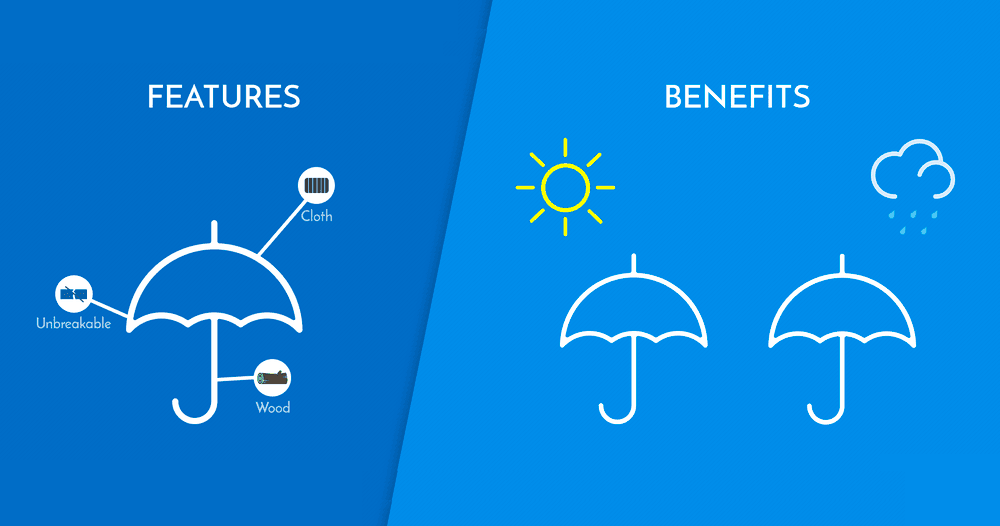A quick guide to differentiate Features and Benefits and using them to sell your products more effectively.
When it comes to the world of direct response television marketing, understanding what aspects of your product to showcase can be a tough decision. We all know every product on the market has its own unique set of proprietary features designed to differentiate itself from the competition—a golf bag with a built-in refreshment center, a baby stroller with an adaptable piggyback. But will highlighting these unique features actually resonate with consumers and separate you from the competition? The answer to this question isn’t quite so cut and dry, and is wholly dependent on where you currently find yourself placed in the market.

Features or Benefits? THAT is the question.
To fully comprehend which approach to advertising you should follow, you must first understand the difference between features and benefits.
Simply put, Features describe what the function of the product is and what sets it apart from the competition.

Benefits, on the other hand, describe how the product can immediately and directly help the target audience.

While unique features are an important aspect of your product’s design, they may not simultaneously reflect and highlight the benefits of the product—in other words, features don’t necessarily drive home the reasons why consumers should spend their hard earned money on your product.
While a golf bag with a built-in refreshment center is an interesting and enticing feature, it most likely won’t make you a better golfer. That’s why it’s important to create messaging that explains why your golf bags’ refreshment center can positively affect the consumer’s life as a golfer. In order to understand the benefits of your product, ask yourself these two questions—Why is my product essential to my audience? Why is it the best? If you choose to advertise your products through direct response television marketing, then it is of vital importance that your messaging reflect the ways your consumer will embark upon a better life as a result of owning your product.
However, it is important to note that some products benefit the lives of consumers laterally and equally, and thus exist in a “saturated market.” This doesn’t mean it is impossible to sell in a saturated market, it just means it takes a different approach. Take the S’well water bottle for example. There are plenty of water bottles on the market that keep liquids cooler and hotter longer than others. But S’well focuses on its materials, its sizes, and its eco-friendly and sustainable design to connect with consumers. These aspects of the bottle are features that distinguish S’well from its competitors, allowing consumers to focus on the differentiators of the product. In this particular case, an advertising approach highlighting the features of the product will resonate more effectively with an audience—water bottles can only do so much, after all.


Select a Direct Response Marketing Strategy
When choosing a direct response marketing strategy, it is imperative to fully comprehend the market you are entering, and to be able to classify your product as truly unique/niche, or mainstream/saturated. Once you have successfully placed your product into one of these two categories, you will be able to create an effective marketing strategy that differentiates your product from your competition based on its features, benefits, or a combination of both.
To better understand the category in which your product belongs, let’s have a look at these three direct marketing advertisements.
Benefits / The Fan Buddie
Features:
https://www.godrtv.com/portfolio/sparklers-slippers
Hybrid / Airospa Pillow “Jane Bond”
Understanding the most beneficial messaging when it comes to direct response marketing is vital to gaining a wider consumer base and generating traffic that leads to conversions. Take the time to research which direction is best for your company and your product, and speak with a professional who can help efficiently streamline and legitimize your direct response television marketing campaign.





